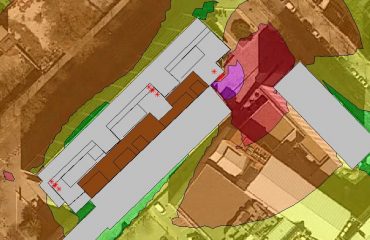Para determinar los parámetros acústicos de una sala se realizan estudios acústicos que incluyen mediciones con fuentes de ruido interrumpido e impulsivo. Las fuentes más utilizadas para generar ruidos impulsivos y medir tiempo de reverberación (o parámetros derivados de la respuesta impulsiva de una sala) son, la pistola del fogueo o los globos. Aquí presentamos un nuevo tipo de fuente impulsiva fácil de hacer y usar, basada en la papiroflexia japonesa o “Origami“. De origen tradicional japonés, el “Origami Banger” se utiliza como un juego de niños para asustar. Sin embargo, el investigador japonés Emi Toyoda, del Kobayasi Institute of Physical Research, ha estudiado las características acústicas de este tipo de fuente y sus posibles aplicaciones en el campo de la acústica de salas. Algunas de las conclusiones obtenidas en estos estudios indican que este tipo de fuente presenta más repetitividad que los globos, aunque tiene problemas de directividad y el contenido espectral del ruido emitido es dependiente del tamaño de la fuente (se requiere un tamaño grande para excitar la baja frecuencia).
Aquí os dejamos varios links a contenidos sobre este curioso generador de impulsos:
Video ilustrativo de cómo construir una fuente Origami Banger: http://www.youtube.com/watch?v=3kZ8iCDZyHc ©Art of Origami
Paper 1:
Artículo sobre la obtención de parámetros derivados de la medida de la respuesta impulsiva de una sala. Comparativa entre dodecaedro (ruido interrumpido), globo y origami banger.
Impulse Response & Acoustical Parameters Measurement with different Sound Sources. Ramón Facundo – Universidad Nacional Tres de Febrero, caseros, Argentina Abril 2013
http://es.scribd.com/doc/142453820/Impulse-response-with-different-sound-sources
Paper 2:
Artículo presentado en el Congreso InterNoise 2009, realizado en Ottawa, Canadá, sobre las características acústicas de este tipo de fuentes.
Abstract del artículo: Toyoda E., Sugie S., Yoshimura J.,“Characteristics of the origami impulse source”. Inter Noise 2009. Ottawa. Canada. 2009
“The purpose of the present study is to develop a new easy-to-use impulse source that performs as well as conventional sources. The present paper introduces an innovative method of generating impulses using a new impulse source called the origami impulse source. The origami impulse source has a simple shape that is easy to produce because its design originates from a traditional paper craft. The paper is folded in such a way that its shape produces a sudden sharp cracking sound when manipulated downward. In order to identify the acoustic characteristics of the origami impulse source, such as the sound energy level, repeatability, radiation directivity, and frequency characteristics, the proposed source was examined by comparison with conventional sources. These results indicate that the origami impulse source is able to produce an impulsive sound that is sufficient for the measurement of impulse responses used in measuring reverberation time. Consequently, the origami impulse source was practically applied to the measurement of reverberation time using the integrated impulse response method. The results of the reverberation time for the origami impulse source were compared with results obtained using the interrupted noise method. The results measured by these two methods were in good agreement. Thus, the capabilities of the origami impulse source for acoustic measurements have been established.”
Paper 3:
Link a la entrada del Kobayasi Institute que trata las características de emisión de la fuente impulsiva Origami. Está en japonés, pero se pueden ver algunos gráficos interesantes como espectro de nivel de presión emitido en función del tamaño de la fuente, comparativas de emisión con globos y diagramas de directividad.

 Español
Español  Català
Català  English
English 


